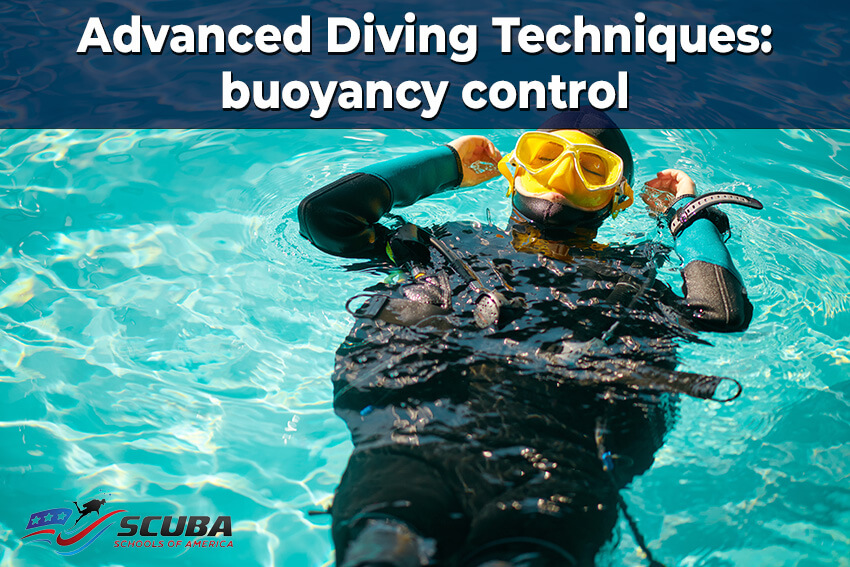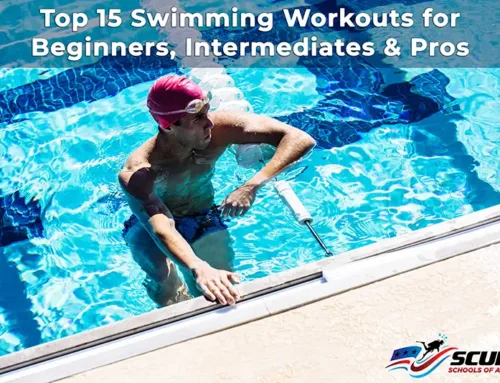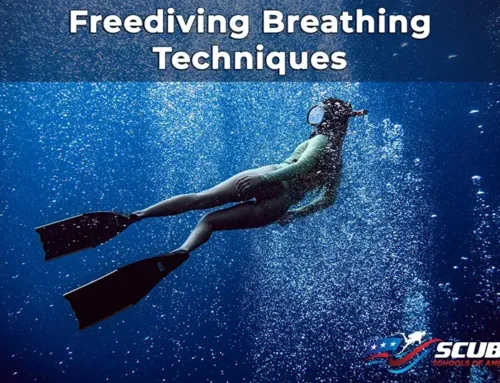Diving is an exhilarating sport that combines the beauty of underwater exploration with the challenge of technical skill. For those who seek to elevate their diving experience, mastering advanced techniques becomes essential. A Buoyancy Control Device (BCD) is an essential piece of diving equipment used by scuba divers to manage their buoyancy underwater. It is typically a vest-like garment worn by the diver, which can be inflated or deflated to adjust the diver’s buoyancy.
Among these, buoyancy control stands out as a critical skill that can dramatically enhance both safety and enjoyment under water. Advanced diving techniques encompass a variety of skills and knowledge areas, but achieving perfect buoyancy is foundational.
Mastering buoyancy control allows divers to navigate effortlessly through the water, conserve energy, and protect the delicate marine environment. It involves a deep understanding of the principles of buoyancy and the practical application of these principles through the use of diving equipment and personal techniques. For divers aspiring to advance their skills, dedicating time to perfect buoyancy control is a worthy investment.
In this guide, we will explore the science behind buoyancy, the essential equipment needed, and the advanced techniques that can help divers achieve and maintain optimal buoyancy. Whether you’re a seasoned diver looking to refine your skills or a novice aiming to advance, this comprehensive approach will provide valuable insights and practical tips.
Understanding Buoyancy Control in Diving
Buoyancy control is the ability to maintain a desired position in the water column, neither sinking nor floating uncontrollably. This skill is crucial for divers as it affects movement, air consumption, and the ability to interact safely with the underwater environment. Proper buoyancy control is achieved through the delicate balance of weight, volume, and the diver’s breathing.
At its core, buoyancy is governed by the principles of physics. Archimedes’ principle states that any object submerged in a fluid is buoyed up by a force equal to the weight of the fluid displaced by the object. For divers, this means that adjusting the volume of air in their lungs and buoyancy compensator device (BCD) can control their position in the water. Mastering this balance is essential for advanced diving.
Divers often encounter various challenges related to buoyancy, such as maintaining neutral buoyancy at different depths and managing the effects of changes in breathing patterns. Understanding how to adjust for these factors is key to improving buoyancy control. Advanced divers must be adept at fine-tuning their buoyancy to adapt to different underwater conditions and to ensure a safe and enjoyable dive.
The Science Behind Buoyancy: A Deep Dive
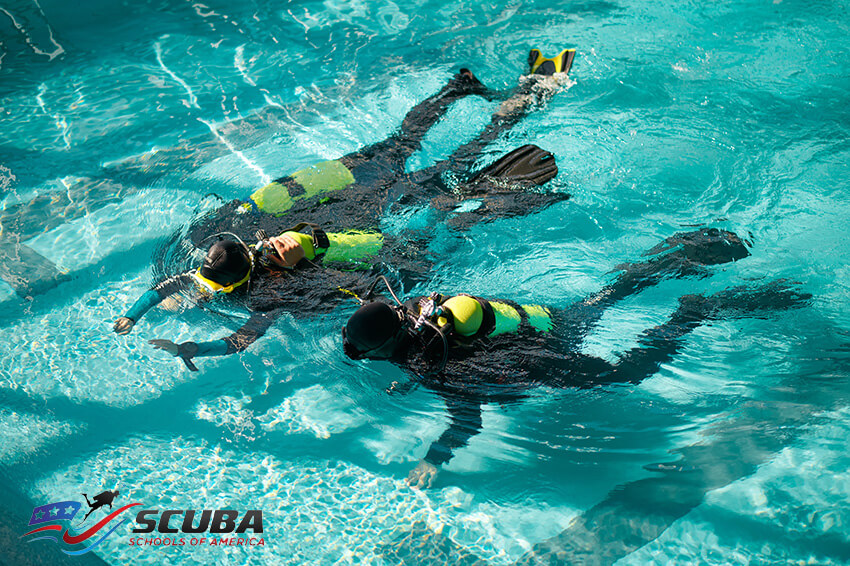
The science of buoyancy in diving involves understanding the relationship between mass, volume, and density. When diving, achieving neutral buoyancy means that the diver’s overall density is equal to the density of the surrounding water. This equilibrium allows the diver to hover effortlessly without sinking or rising, conserving energy and reducing the risk of disturbing the marine environment.
To control buoyancy, divers use a buoyancy compensator device (BCD) which allows them to add or release air. This adjustment changes their volume and thus their overall density. Additionally, the diver’s wetsuit, weight system, and other gear all contribute to their buoyancy. Understanding how each component affects buoyancy helps divers make precise adjustments to maintain stability.
Temperature and salinity also play crucial roles in buoyancy. Warmer water is less dense than colder water, and saltwater is denser than freshwater. Divers must account for these variations when planning their dives and adjusting their buoyancy. Advanced divers develop an intuitive understanding of these factors, enabling them to make on-the-fly adjustments that ensure optimal buoyancy control.
Equipment Essentials for Buoyancy Control
Structure and Components
Bladder: The central part of the BCD is a bladder that holds air. This bladder can be inflated to increase buoyancy or deflated to decrease it. The bladder is usually located around the diver’s back and sides.
Inflator Mechanism: The BCD is equipped with an inflator mechanism, which is connected to the diver’s air tank via a low-pressure hose. The inflator mechanism typically has two buttons – one for inflating the bladder with air from the tank and another for deflating it by releasing air.
Dump Valves: These valves allow the diver to release air from the BCD quickly. They are usually positioned at strategic points on the BCD to allow easy access regardless of the diver’s position in the water.
Straps and Harness: The BCD includes adjustable straps and a harness system to ensure a secure and comfortable fit. These straps help to distribute the weight of the equipment evenly across the diver’s body.
Integrated Weight Pockets: Many modern BCDs come with integrated weight pockets, allowing divers to carry weights in the BCD itself rather than using a separate weight belt. This feature helps improve the diver’s trim and balance underwater.
Effective buoyancy control relies heavily on the proper use and maintenance of diving equipment. The Buoyancy Compensator Device (BCD) is central to managing buoyancy. It allows divers to add or release air to achieve the desired buoyancy. Choosing the right BCD, with the appropriate lift capacity and fit, is crucial for maintaining control and comfort underwater.
Weight systems are another critical component. Divers use weights to counteract the buoyancy of their bodies and equipment. The distribution of these weights can significantly impact buoyancy control. Integrated weight systems in the BCD or weight belts are commonly used, and divers must learn to adjust these weights based on their diving conditions and personal buoyancy characteristics.
Techniques for Perfecting Buoyancy
Perfecting buoyancy control involves mastering several techniques that allow divers to make precise adjustments while underwater. One fundamental technique is proper breathing control. Since the lungs act as natural buoyancy compensators, divers can fine-tune their buoyancy by adjusting their breathing patterns – taking deeper breaths to ascend slightly and exhaling to descend.
Another crucial technique is the use of the BC. Learning how to make small, controlled adjustments to the BC can help maintain neutral buoyancy. Divers should practice inflating and deflating their BCs in small increments, paying attention to how these adjustments affect their position in the water. This practice helps develop a more intuitive sense of buoyancy control.
Body position and movement also influence buoyancy. Maintaining a horizontal position, or trim, reduces drag and allows for more efficient movement. Advanced divers practice keeping their bodies streamlined and using gentle, controlled fin movements to navigate. This approach minimizes disturbances to the surrounding environment and conserves energy, making for a more enjoyable and sustainable diving experience.
The Role of Weight Distribution in Buoyancy
Weight distribution plays a critical role in achieving and maintaining buoyancy control. Properly balanced weights help divers maintain a horizontal position and make it easier to achieve neutral buoyancy. The placement of weights can affect a diver’s trim, which is the orientation of their body in the water. A well-trimmed diver experiences less drag and moves more efficiently.
To achieve optimal weight distribution, divers should experiment with different weight configurations. Weights can be distributed using a weight belt, integrated weight pockets in the BCD, or ankle weights. Divers should ensure that the weights are balanced on both sides of their body to prevent tipping or rolling. Adjusting the position of weights can help fine-tune buoyancy and trim.
Advanced divers often use a process called “weight checking” before a dive. This involves floating at the surface with an empty BCD and minimal air in the lungs to ensure they are neutrally buoyant. This check helps confirm that the diver has the correct amount of weight to achieve neutral buoyancy at different depths. Regularly assessing and adjusting weight distribution is key to maintaining control and stability underwater.
Common Challenges and How to Overcome Them
Even experienced divers face challenges with buoyancy control. One common issue is overinflating the BCD, which can lead to rapid ascents and difficulty maintaining depth. Divers should practice making small, incremental adjustments to the BCD and avoid overcompensating with too much air. Patience and practice are essential to mastering this aspect of buoyancy control.
Another challenge is dealing with changes in buoyancy due to wetsuit compression at different depths. As a diver descends, the wetsuit compresses, reducing its buoyancy. Divers need to add air to their BCD to compensate for this loss of buoyancy. Conversely, as they ascend, they need to release air to avoid becoming too buoyant. Understanding and anticipating these changes helps divers maintain stability.
Task loading can also affect buoyancy control. Managing multiple tasks, such as navigating, monitoring air supply, and communicating with a dive buddy, can distract from maintaining proper buoyancy. Divers should practice multitasking in controlled environments to build their confidence and competence. Developing a routine and prioritizing tasks can help mitigate the impact of task loading on buoyancy control.
Practicing Buoyancy Control in Different Diving Environments
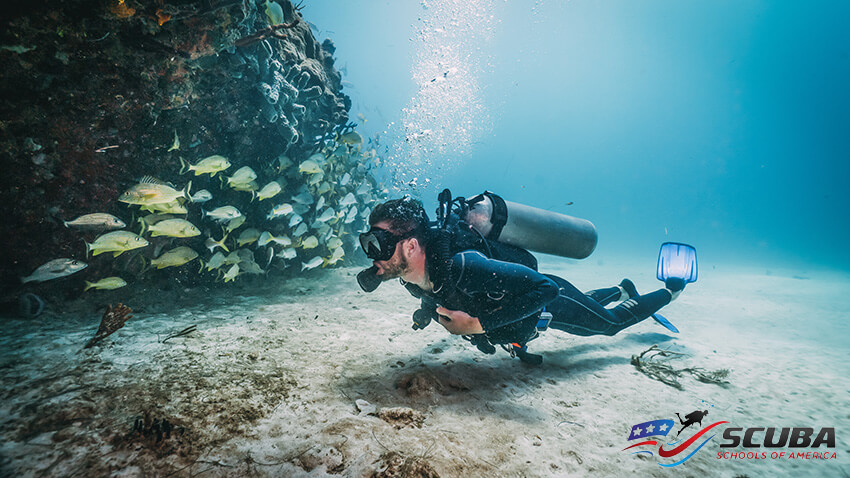
Different diving environments present unique challenges for buoyancy control. In shallow waters, changes in buoyancy are more pronounced, requiring divers to make more frequent adjustments. Practicing in shallow environments helps divers develop quick reflexes and fine-tune their buoyancy skills. Controlled environments, like swimming pools, are excellent places to start.
Deep diving requires an understanding of how increased pressure affects buoyancy and breathing. At greater depths, divers experience more significant compression of their wetsuits and lungs, necessitating careful management of the BCD. Practicing deep dives with a focus on buoyancy control prepares divers for these conditions and helps them maintain stability and safety.
Diving in currents and surge conditions adds another layer of complexity. Maintaining buoyancy while moving with or against water currents demands a high level of skill and awareness. Divers must use their fins effectively and adjust their buoyancy to avoid being swept away or losing control. Practicing in varied conditions builds resilience and adaptability, essential traits for advanced divers.
Advanced Tips for Experienced Divers
Experienced divers looking to refine their buoyancy control can benefit from advanced tips and techniques. One such technique is “hovering,” which involves maintaining a stationary position in the water for extended periods. This practice helps divers develop a keen sense of balance and control. Regularly practicing hovering in different conditions can significantly improve buoyancy skills.
Another advanced technique is “breath control with micro-adjustments.” Experienced divers learn to make tiny adjustments to their breathing to maintain precise buoyancy. This involves fine-tuning the volume of each breath rather than relying solely on the BCD. Practicing this technique helps divers achieve a higher level of control and stability, especially in dynamic environments.
Divers should also focus on refining their trim. This involves adjusting the position and distribution of weights, body posture, and finning techniques to achieve a perfectly horizontal position. A well-trimmed diver experiences less drag and moves more efficiently through the water. Regularly assessing and adjusting trim ensures optimal performance and buoyancy control.
Conclusion: The Path to Mastery in Buoyancy Control
Mastering buoyancy control is a journey that requires dedication, practice, and a deep understanding of the principles involved. At Scuba Schools of America, we understand that for advanced divers, achieving perfect buoyancy is not just about improving aesthetics but also about enhancing safety, efficiency, and the overall diving experience. By focusing on the science of buoyancy, utilizing the right equipment, and practicing advanced techniques, divers can reach new levels of proficiency.
The benefits of mastering buoyancy control extend far beyond individual dives. It allows divers to explore more challenging environments, engage in activities like underwater photography, and interact responsibly with marine life. The confidence gained from perfecting this skill enriches every aspect of the diving experience, making each dive more enjoyable and rewarding.
For those committed to advancing their diving skills, the path to mastering buoyancy control is both challenging and immensely satisfying. It represents a significant milestone in a diver’s journey, marking the transition from novice to expert. With practice and perseverance, any diver can achieve this level of mastery and enjoy the full spectrum of underwater adventures. For more information on how you can master buoyancy control, contact Scuba Schools of America at (909) 621-4171.

